Abstract
Let P1 be the probability of a disease in one population and P2 be the probability of a disease in a second population. The ratio of these quantities, R = P1/P2, is termed the relative risk. We consider first the analyses of the relative risk from retrospective studies. The relation between the relative risk and the odds ratio (or cross-product ratio) is developed. The odds ratio can be considered a parameter of an exponential model possessing sufficient statistics. This permits the development of exact significance tests and confidence intervals in the conditional space. Unconditional tests and intervals are also considered briefly. The consequences of misclassification errors and ignoring matching or stratifying are also considered. The various methods are extended to combination of results over the strata. Examples of case-control studies testing the association between HL-A frequencies and cancer illustrate the techniques. The parallel analyses of prospective studies are given. If P1 and P2 are small with large samples sizes the appropriate model is a Poisson distribution. This yields a exponential model with sufficient statistics. Exact conditional tests and confidence intervals can then be developed. Here we consider the case where two populations are compared adjusting for sex differences as well as for the strata (or covariate) differences such as age. The methods are applied to two examples: (1) testing in the two sexes the ratio of relative risks of skin cancer in people living in different latitudes, and (2) testing over time the ratio of the relative risks of cancer in two cities, one of which fluoridated its drinking water and one which did not.
Full text
PDF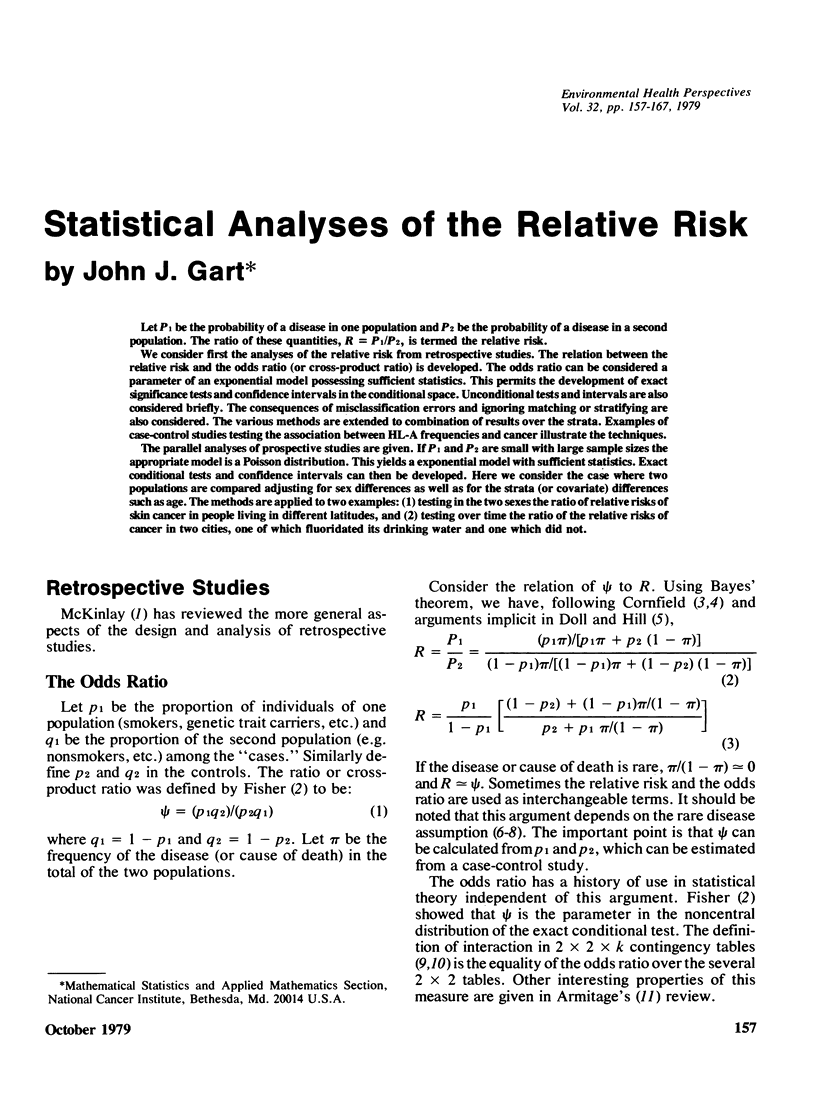
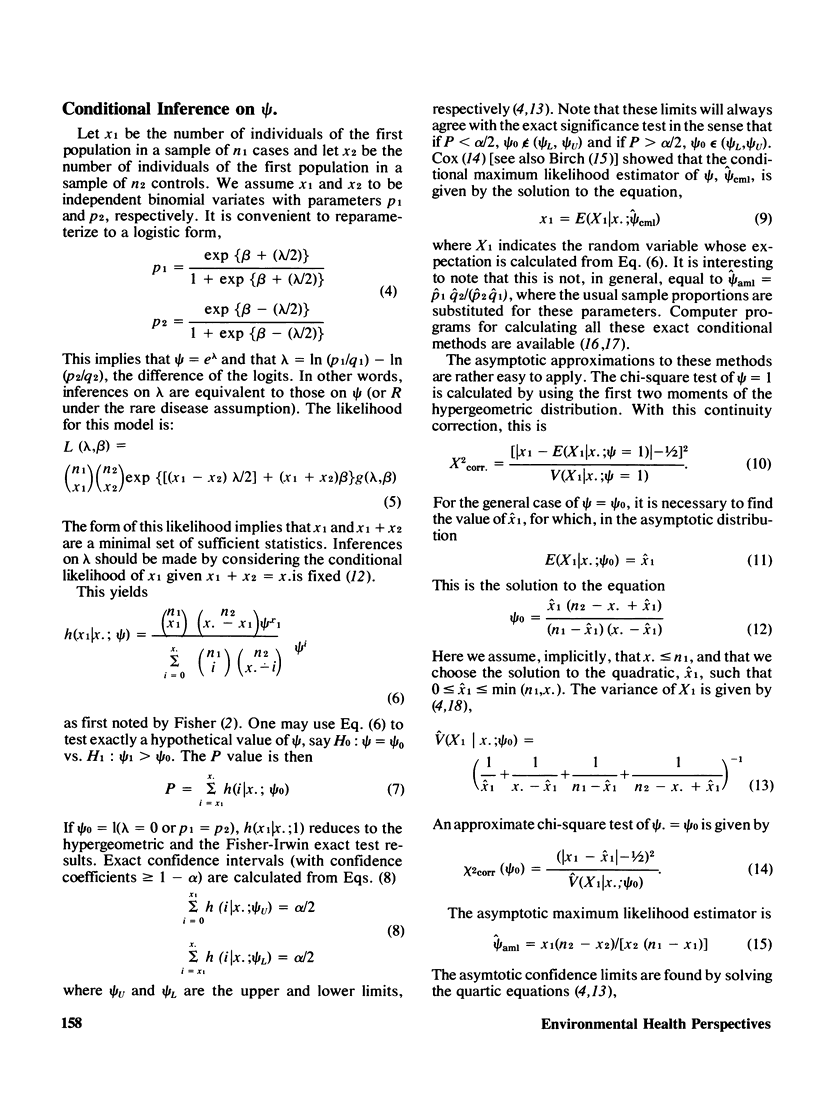
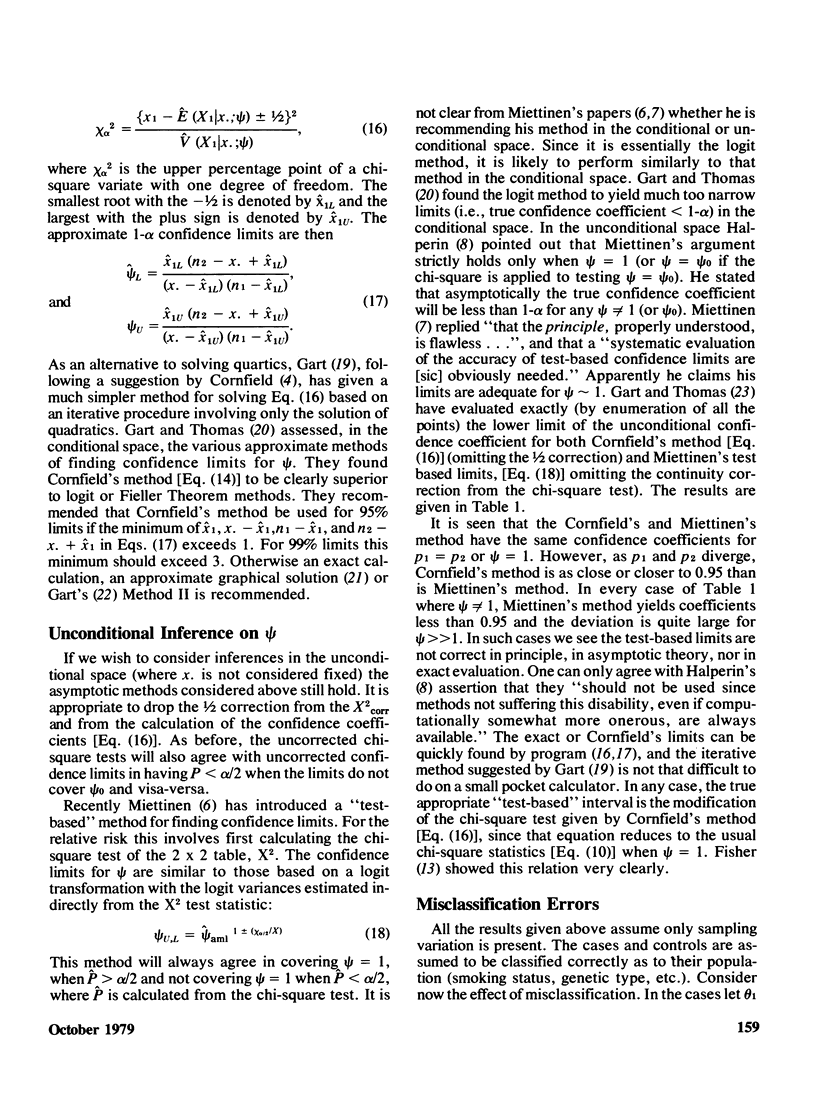
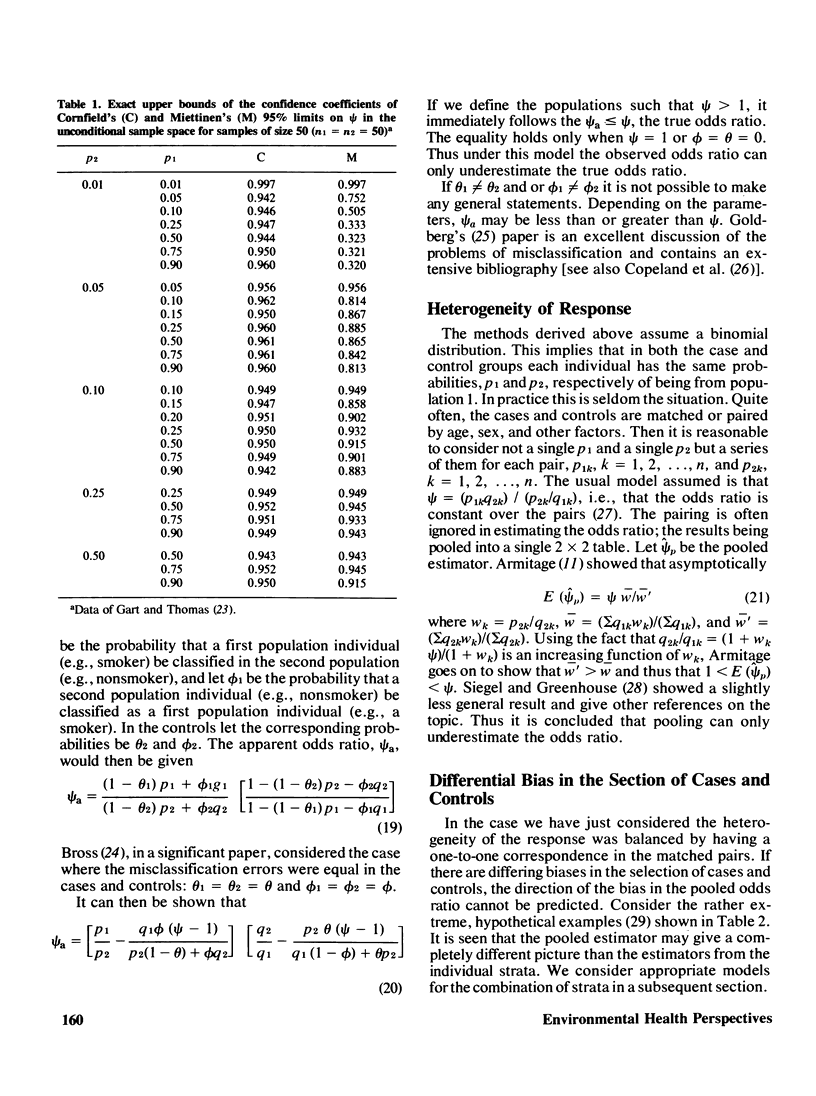
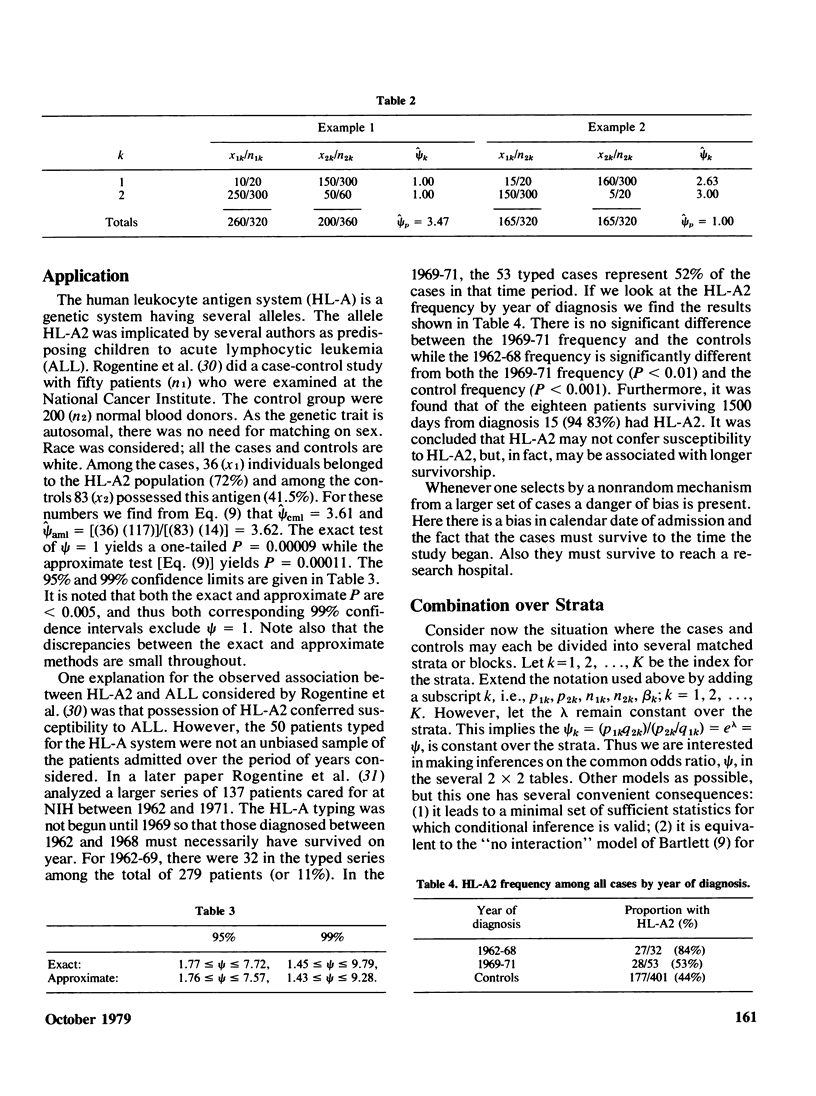
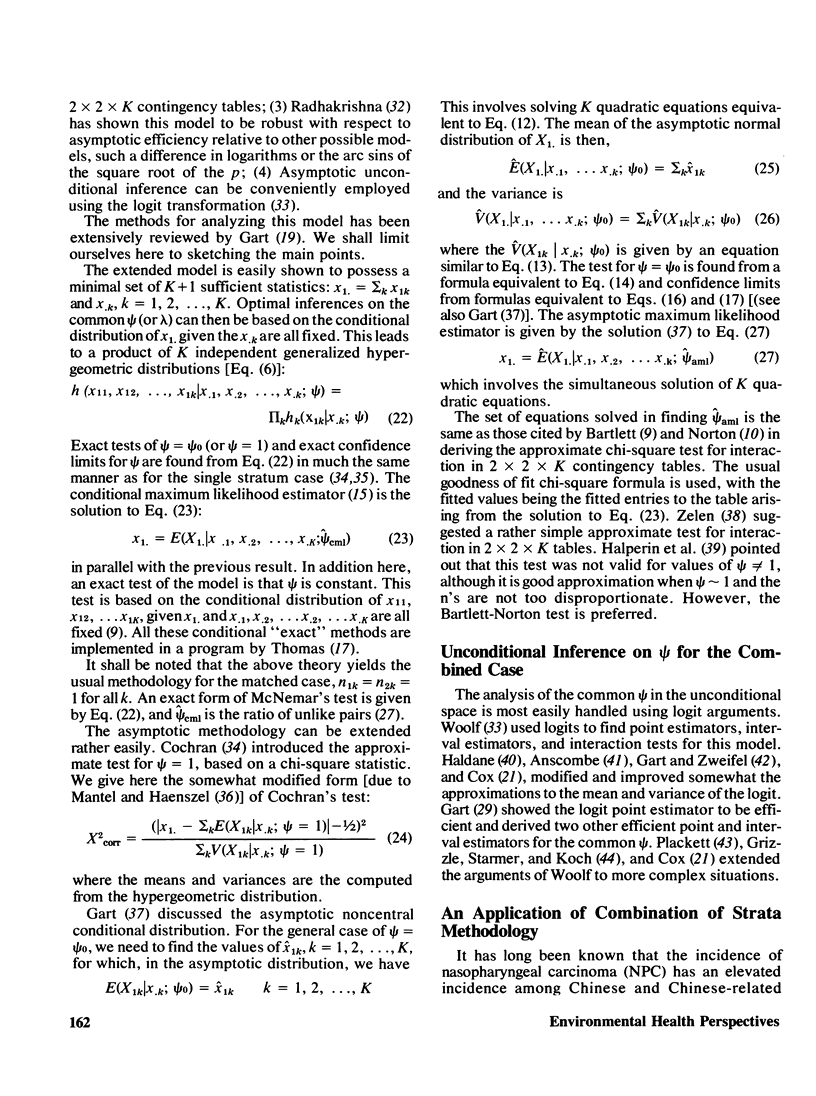
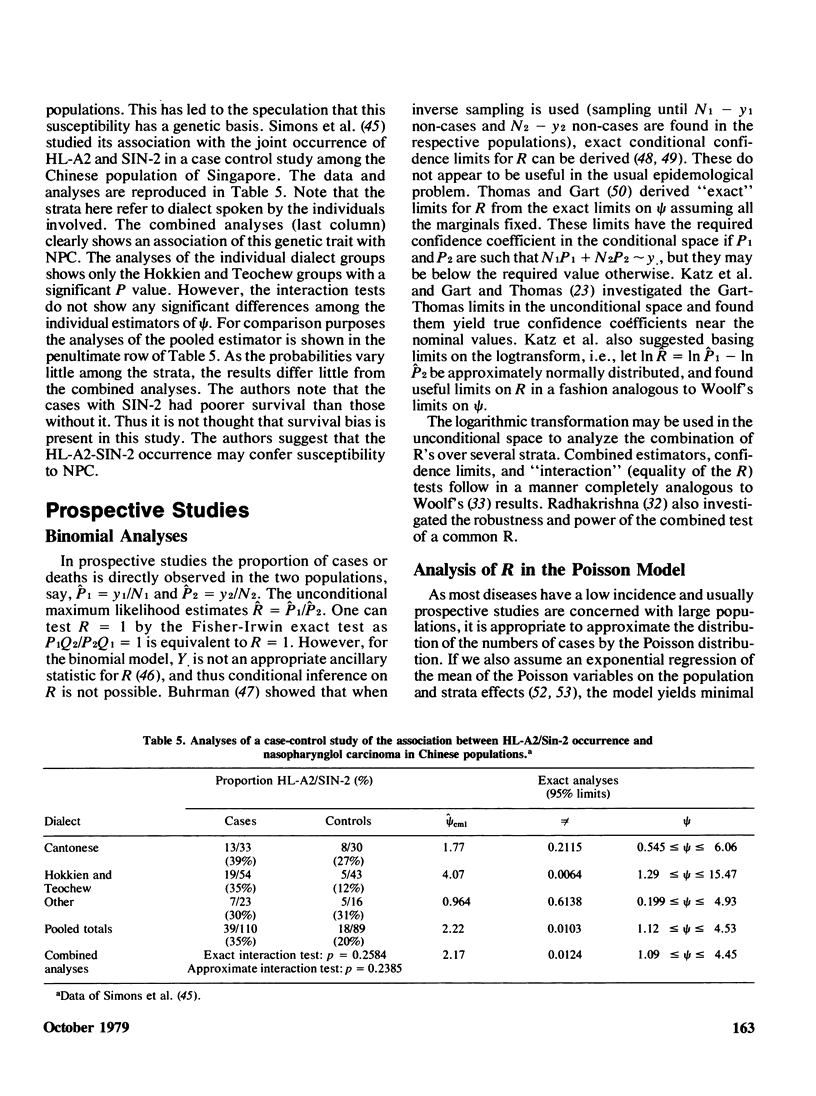
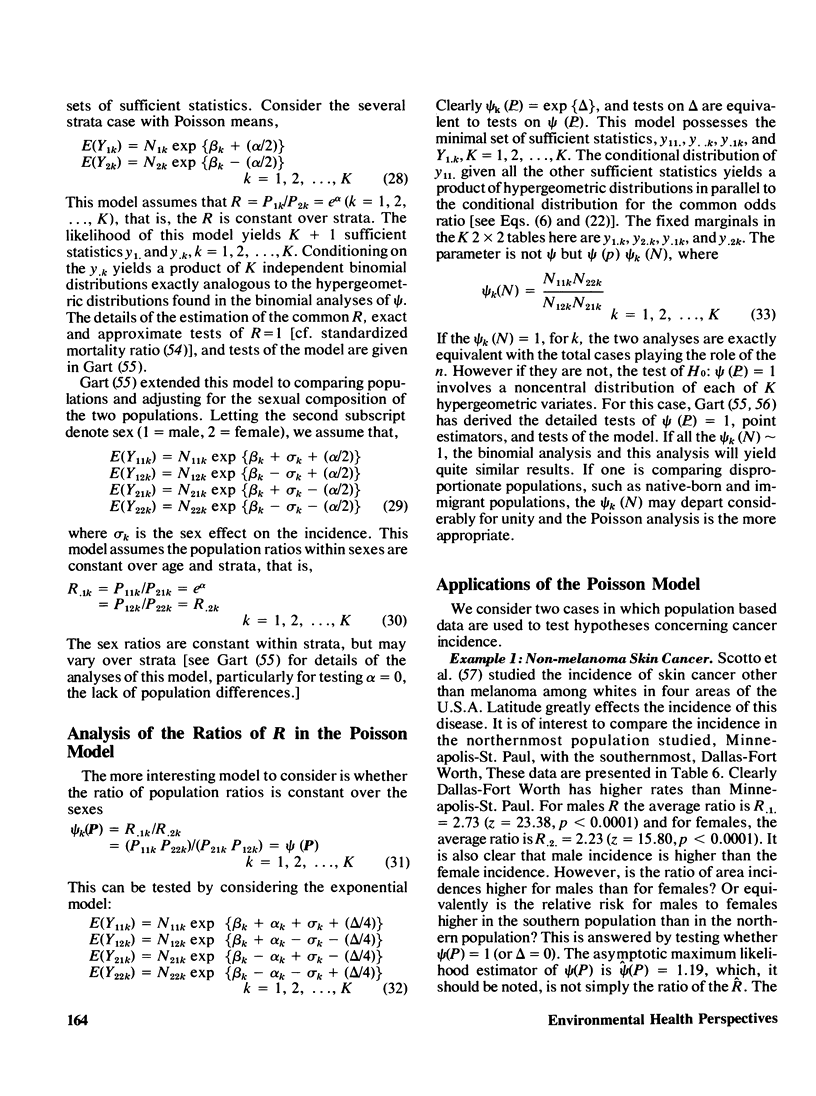
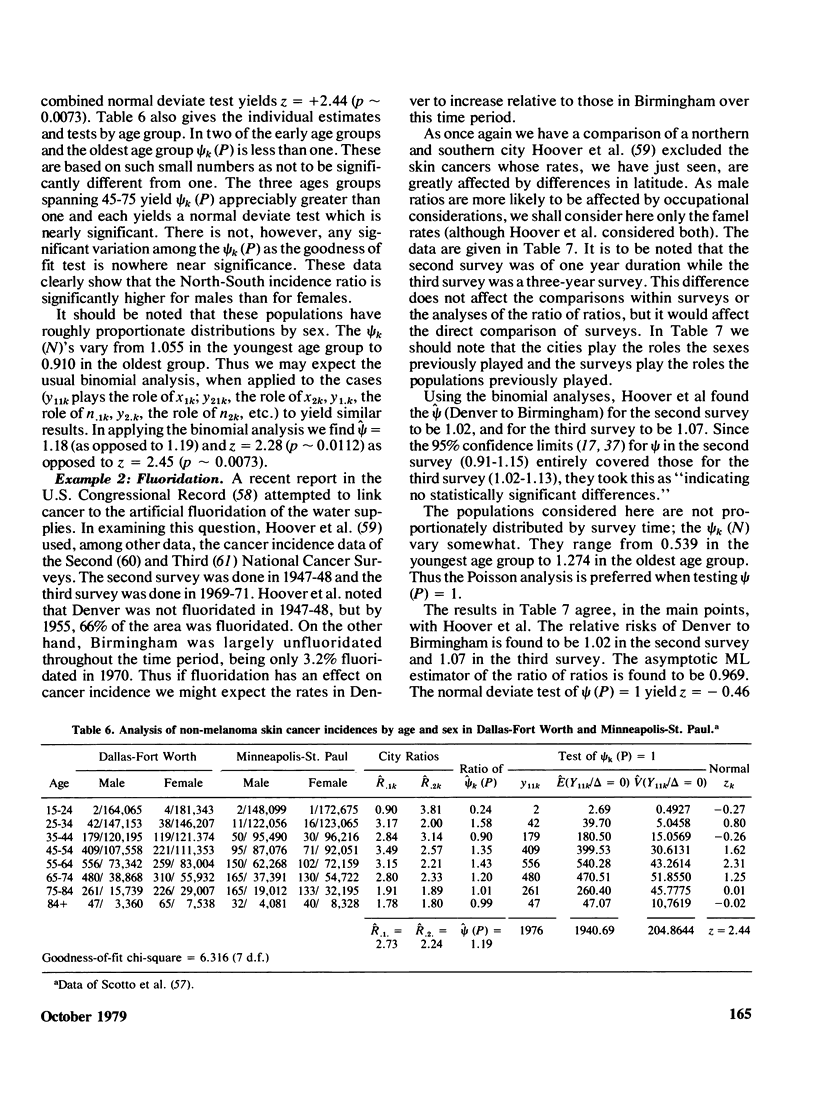
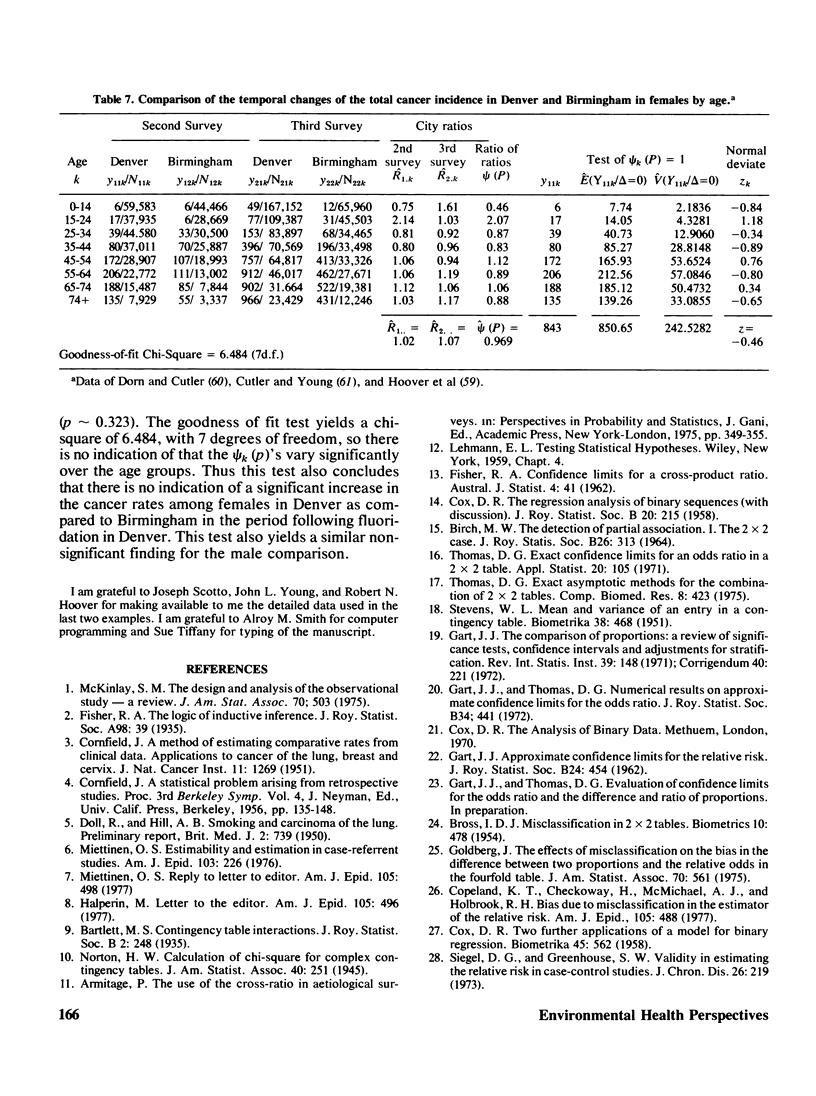
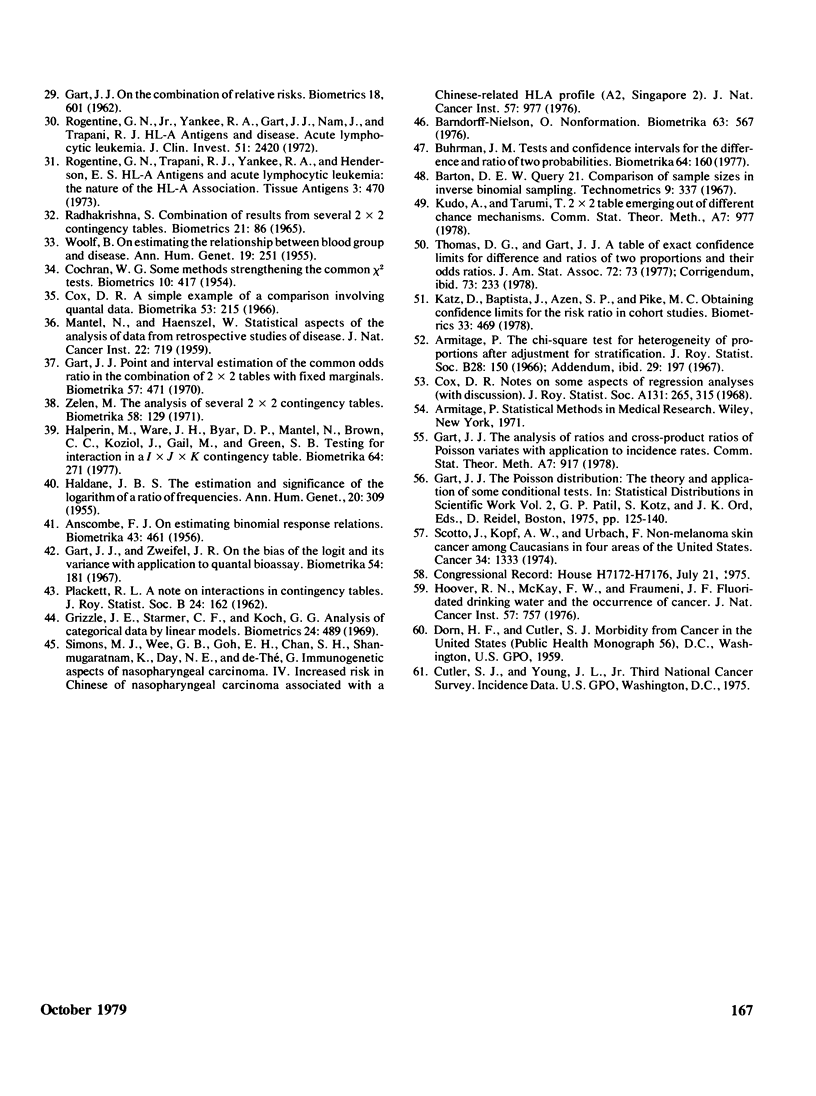
Selected References
These references are in PubMed. This may not be the complete list of references from this article.
- CORNFIELD J. A method of estimating comparative rates from clinical data; applications to cancer of the lung, breast, and cervix. J Natl Cancer Inst. 1951 Jun;11(6):1269–1275. [PubMed] [Google Scholar]
- Copeland K. T., Checkoway H., McMichael A. J., Holbrook R. H. Bias due to misclassification in the estimation of relative risk. Am J Epidemiol. 1977 May;105(5):488–495. doi: 10.1093/oxfordjournals.aje.a112408. [DOI] [PubMed] [Google Scholar]
- Cox D. R. A simple example of a comparison involving quantal data. Biometrika. 1966 Jun;53(1):215–220. [PubMed] [Google Scholar]
- DOLL R., HILL A. B. Smoking and carcinoma of the lung; preliminary report. Br Med J. 1950 Sep 30;2(4682):739–748. doi: 10.1136/bmj.2.4682.739. [DOI] [PMC free article] [PubMed] [Google Scholar]
- Gart J. J., Zweifel J. R. On the bias of various estimators of the logit and its variance with application to quantal bioassay. Biometrika. 1967 Jun;54(1):181–187. [PubMed] [Google Scholar]
- Grizzle J. E., Starmer C. F., Koch G. G. Analysis of categorical data by linear models. Biometrics. 1969 Sep;25(3):489–504. [PubMed] [Google Scholar]
- HALDANE J. B. The estimation and significance of the logarithm of a ratio of frequencies. Ann Hum Genet. 1956 May;20(4):309–311. doi: 10.1111/j.1469-1809.1955.tb01285.x. [DOI] [PubMed] [Google Scholar]
- Halperin M., Miettinen O. Re: "estimability and estimation in case-referent studies". Am J Epidemiol. 1977 May;105(5):496–502. doi: 10.1093/oxfordjournals.aje.a112409. [DOI] [PubMed] [Google Scholar]
- Hoover R. N., McKay F. W., Fraumeni J. F., Jr Fluoridated drinking water and the occurrence of cancer. J Natl Cancer Inst. 1976 Oct;57(4):757–768. doi: 10.1093/jnci/57.4.757. [DOI] [PubMed] [Google Scholar]
- MANTEL N., HAENSZEL W. Statistical aspects of the analysis of data from retrospective studies of disease. J Natl Cancer Inst. 1959 Apr;22(4):719–748. [PubMed] [Google Scholar]
- Miettinen O. Estimability and estimation in case-referent studies. Am J Epidemiol. 1976 Feb;103(2):226–235. doi: 10.1093/oxfordjournals.aje.a112220. [DOI] [PubMed] [Google Scholar]
- Rogentine G. N., Jr, Yankee R. A., Gart J. J., Nam J., Trapani R. J. HL-A antigens and disease. Acute lymphocytic leukemia. J Clin Invest. 1972 Sep;51(9):2420–2428. doi: 10.1172/JCI107055. [DOI] [PMC free article] [PubMed] [Google Scholar]
- Rogentine G. N., Trapani R. J., Yankee R. A., Henderson E. S. HL-A antigens and acute lymphocytic leukemia: the nature of the HL-A2 association. Tissue Antigens. 1973;3(6):470–476. doi: 10.1111/j.1399-0039.1973.tb00517.x. [DOI] [PubMed] [Google Scholar]
- Scotto J., Kopf A. W., Urbach F. Non-melanoma skin cancer among Caucasians in four areas of the United States. Cancer. 1974 Oct;34(4):1333–1338. doi: 10.1002/1097-0142(197410)34:4<1333::aid-cncr2820340447>3.0.co;2-a. [DOI] [PubMed] [Google Scholar]
- Seigel D. G., Greenhouse S. W. Validity in estimating relative risk in case-control studies. J Chronic Dis. 1973 Apr;26(4):219–225. doi: 10.1016/0021-9681(73)90102-1. [DOI] [PubMed] [Google Scholar]
- Simons M. J., Wee G. B., Goh E. H., Chan S. H., Shanmugaratnam K., Day N. E., de-Thé G. Immunogenetic aspects of nasopharyngeal carcinoma. IV. Increased risk in Chinese of nasopharyngeal carcinoma associated with a Chinese-related HLA profile (A2, Singapore 2). J Natl Cancer Inst. 1976 Nov;57(5):977–980. doi: 10.1093/jnci/57.5.977. [DOI] [PubMed] [Google Scholar]
- Thomas D. G. Exact and asymptotic methods for the combination of 2 times 2 tables. Comput Biomed Res. 1975 Oct;8(5):423–446. doi: 10.1016/0010-4809(75)90048-8. [DOI] [PubMed] [Google Scholar]
- WOOLF B. On estimating the relation between blood group and disease. Ann Hum Genet. 1955 Jun;19(4):251–253. doi: 10.1111/j.1469-1809.1955.tb01348.x. [DOI] [PubMed] [Google Scholar]


